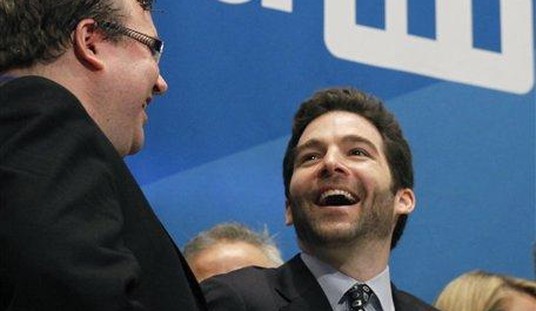First the good news about Baltimore, Maryland in this summer of unrest. While there have certainly been some protests and demonstrations, the city has largely avoided the rioting and looting plaguing other cities around the country. Both the police and City Hall have earned praise, including from the Governor, for their handling of demonstrations. With very few exceptions, these events have remained calm. The police have been out in force, maintaining order (and curfews where required) while allowing people to make their voices heard. Some protesters complained about the police being “too aggressive” in keeping everyone in line, but it seems to have worked out. And the city’s leadership is crediting the lessons they learned during the Freddie Gray riots. (Baltimore Sun)
The recent gatherings in Baltimore have been largely peaceful, and clashes between police and the public did not materialize as they did in so many other cities earlier this month, which Police Commissioner Michael Harrison attributed to lessons learned in 2015 and from his own experiences working for the New Orleans Police Department after Hurricane Katrina.
Though several officials, including Maryland Gov. Larry Hogan, complimented law enforcement on its response to the recent protests, some activists have criticized the police department, saying officers used aggressive tactics during the recent demonstrations.
In 2015, Baltimore’s response to the unrest following the death of Freddie Gray was also criticized when 235 people were arrested, 20 officers were injured, and nearly 300 businesses were damaged, with about a dozen burned.
As I mentioned above, that’s the good news. It’s a shame that it took something like the complete debacle of the Freddie Gray riots for them to get up to speed, but they did it. Other cities might be able to benefit from this by studying just how Baltimore has been handling the protests.
Sadly, there’s rarely any good news without some bad news to follow. In this case, the lack of violence related to ongoing demonstrations is being more than made up for by the usual gang warfare and shootings that have been plaguing Charm City for decades now, with no sign of respite. In just the past week ending on Sunday, more than 45 people were shot in Baltimore with eleven dead. And that spate of shootings came on the heels of a particularly murderous Labor Day weekend, where more than a dozen people were shot in a single day. At this point, it just feels as if much of the community is simply hunkering down and waiting for the cold weather to return.
As violence fluctuated this summer in Baltimore, the recent week in September left at least 45 people shot throughout the city — 11 of them dead since Sunday, according to Baltimore police data.
Baltimore police confirmed on Sunday that from Sept. 6 to Sept. 13, 34 people were injured in shootings and 11 others were killed. But the week had already started off rough, coming off of a violent Labor Day weekend after 12 people had been shot, two others being killed and one person who was fatally stabbed. The latest shooting occurred overnight, around 12:24 a.m. in 700 block of N. Montford Ave., where a 20-year-old was struck in the back.
Mark Washington, executive director of the Coldstream-Homestead-Montebello Community Corporation, said community is also “a part of the failure” that led to the murder of the boy in their community.
If you click through and read that second Baltimore Sun article, you’ll see a lot of sadness and frustration being expressed by community leaders and elected officials. There are clearly heartfelt calls for these neighborhoods to make public the names of the children who have been lost in these shootings and reveal the hole that they leave behind in everyone’s lives.
A number of local leaders have chimed in. The leader of one “Community Corporation” admitted that their own community is at least partly to blame. A City Councilwoman is quoted, talking about how it’s so hard to pull the community together and rebuild when the shootings and deaths continue. They’re all talking about “gun violence” and steering young people away from “crime-related activities.”
But do you know the one word that doesn’t slip past the lips of any of these community leaders during their interviews? “Gangs.” Nobody will even admit that Baltimore has been in the grip of gang violence for decades and it’s only growing worse, not better.
Organized crime, whether it’s the mafia or street gangs like these, require special types of law enforcement engagement to bring them under control. Just ask the feds who have had to lead organized crime task forces in New York City, New Jersey and Philadelphia over the years. Regular policing of individual crimes and individual shooters doesn’t get the job done. You have to find a way to break up the organizational structure underlying the drug dealing, black-market weapons and murder. If they can’t talk to the feds about it, perhaps they could all sit down and binge-watch the HBO series The Wire. I know you get sick of hearing me say it, but I’ll remind all of Baltimore yet again… that wasn’t a drama. It was a documentary.








